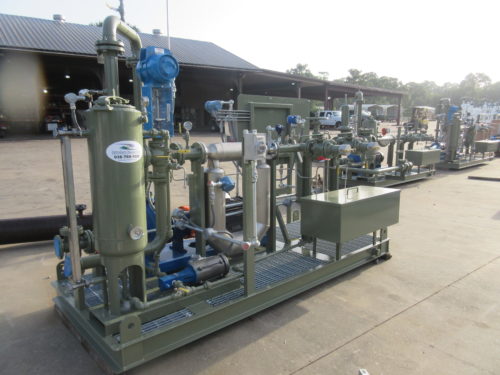What are LACT Units?
A LACT or Lease Automated Custody Transfer unit’s primary purpose is to measure the net volume and quality of liquid hydrocarbons. It’s secondary function provides a means to transfer petroleum products from one legal entity or owner to another. The measurements involved require stringent controls to be in place to ensure the accuracy and exacting standards needed by an operator or end user.

In all cases, requirements by governing bodies and industry standards must be met in order to address quality, safety and environmental impact concerns.
A typical LACT Unit may include the following:
- Inlet strainers which prevent foreign objects from entering and potentially damaging the unit or contaminating the product.
- Air eliminators which work upstream of the meter to ensure no air is metered along with product.
- Flow meters such as Coriolis, positive displacement or turbine types to accurately measure product volume.
- Valves to regulate and maintain the system, prevent leakage and divert flow when required.
- Suction and Discharge piping to move and direct material flow.
- BS&W Probes measure and monitor water content and sediment within the product flow.
- The Sampler System obtains samples of the flow to determine API gravity and BS&W content within.
- A Meter Prover Loop verifies that no leakage is occurring within the unit.
- The Charge Pump is the energy source for the unit.
LACT units or skids provide a faster, cheaper solution than erecting field stations and mitigate associated project costs and delivery schedules.
With over 40 years of experience behind every product or service provided at PMEC, our reputation speaks for itself. Contact us today to learn how PMEC can meet or exceed your requirements in skid fabrication, field construction, meter proving and services.
